The ancient pagoda of Boi Khe, also known as Dai Bi Tu in script letters, is listed one of the most beautiful pagodas in Vietnam. The pagoda worships a local saint called Nguyen Binh An who built the pagoda and led the locals to fight against the northern invaders.
Boi Khe Pagoda was built in 1338 under the reign of King Tran Hien Tong in Boi Khe Village in Tam Hung commune, Thanh Oai district, Hanoi. It was designed in the architectural style of “tien Phat, hau Thanh” (the front area is dedicated to Buddha and the rear area to saints”. The pagoda area is composed of three parts, including Tien duong (the front hall), central hall and back hall. The front and central halls were built in the shape of the Chinese script of “Guo”, whereas, the halland the area for worshiping deities form into the Chinese script of “Guo”. All the architectural works are arranged symmetrically on the two sides of a main axis.
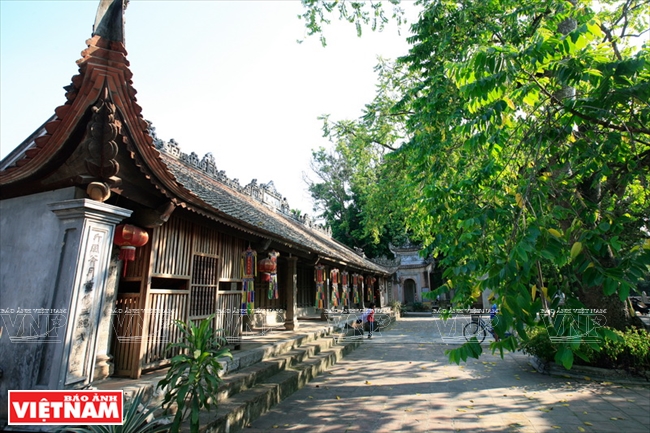
Part of the ancient pagoda of Boi Khe.

Boi Khe Pagoda is one of a few pagodas that has both a three-entrance gate and a five-entrance gate.

The statue of Guanyin with 12 hands is an ancient and rare object in the pagoda.

An object dating back to 1382 carved from precious stone is also one of the most ancient objects in the pagoda.
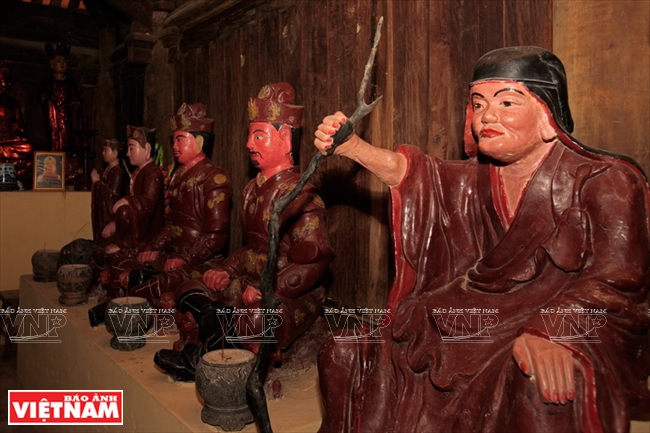
The pagoda now preserves many precious and race statues.
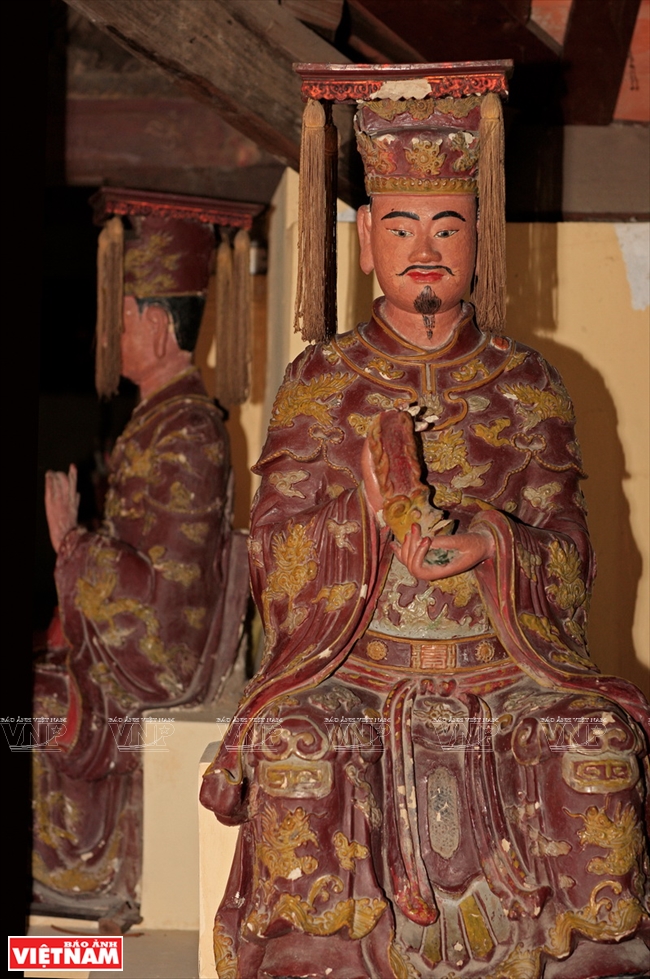
An ancient statue in the pagoda.
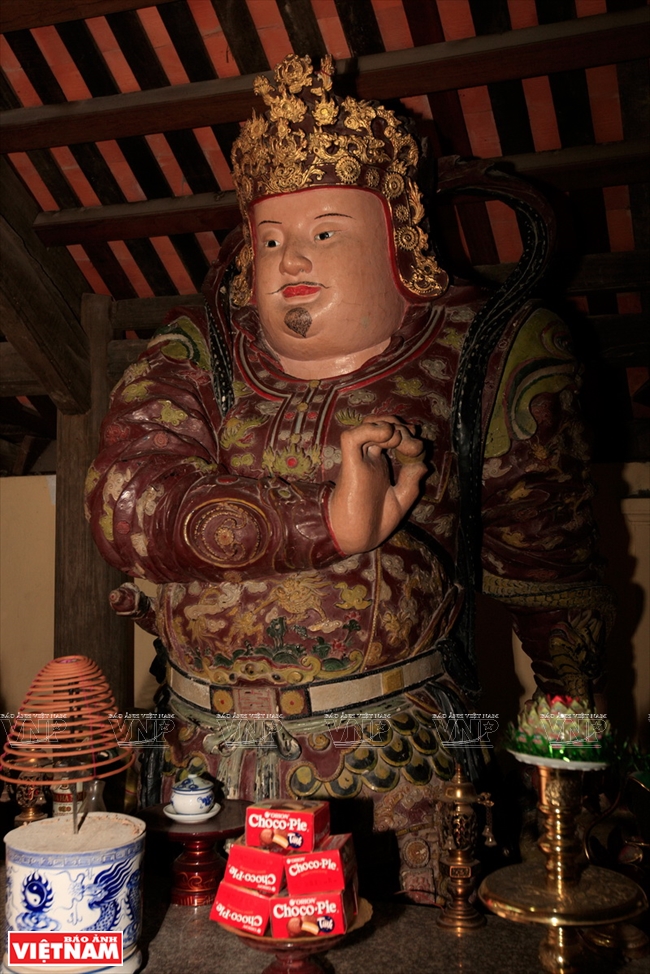
An ancient statue in the pagoda.
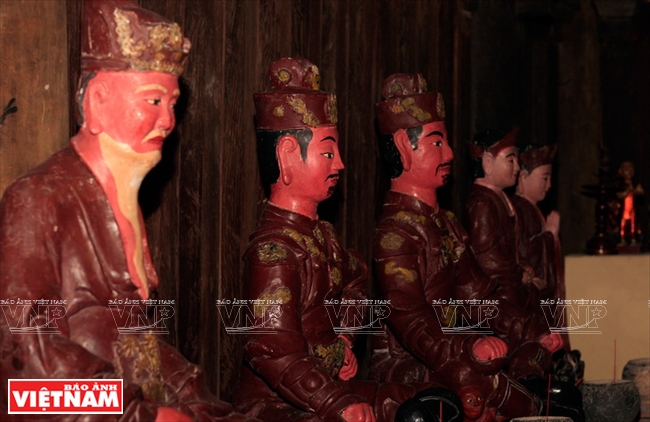
Statues in the Buddha-worshiping hall in Boi Khe pagoda.
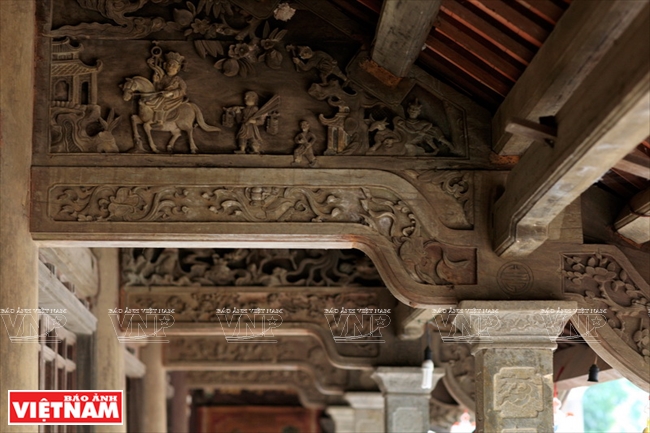
Paintings carved with lively patterns.
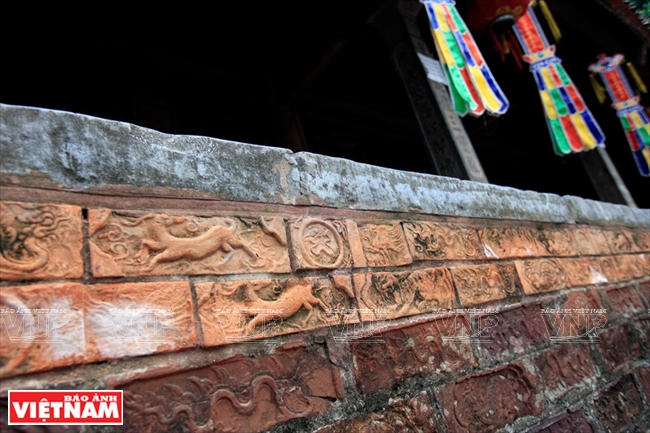
Decorative bricks with the images of sacred animals on the floor of the pagoda. |
To enter the pagoda, visitors will go through a five entrance gate and then go over a small bridge before another three-entrance gate which has two floors and 8 roofs. On this gate is a bell tower which displays two bells cast in the year of the 4thThieu Tri (1944). Standing on the bell tower, tourists will have a panoramic view of the whole space of the pagoda which is surrounded by ancient trees, bonsais, flowers and three rare varieties of lotus.
The pagoda has decorative sculptured patterns from the Tran Dynasty (the 13th -14th centuries), the Le So-Mac (the 15th – 16th centuries) and the Nguyen Dynasty (the 19th-20th centuries) which are clearly seen on the two pillars in the central worshiping hall and patterns of four sacred animals and geometric patterns in the temple worshipping the saints.
Apart from the ancient architectural features, the pagoda also preserves many rare stone objects carved with dragons, bird genies, flowers and leaves dating backto the 14th century. There are 58 Buddhist statues in the pagoda, notably the statue of Guanyin with 12 hands, 2m high, sitting on a lotus tower, in the central worshipping hall.
So far, the pagoda has maintained many religious rites of the Truc Lam religion. Annually, the pagoda’s festival is held on December of the lunar calendar.
Story: Ngan Ha - Photos: Viet Cuong